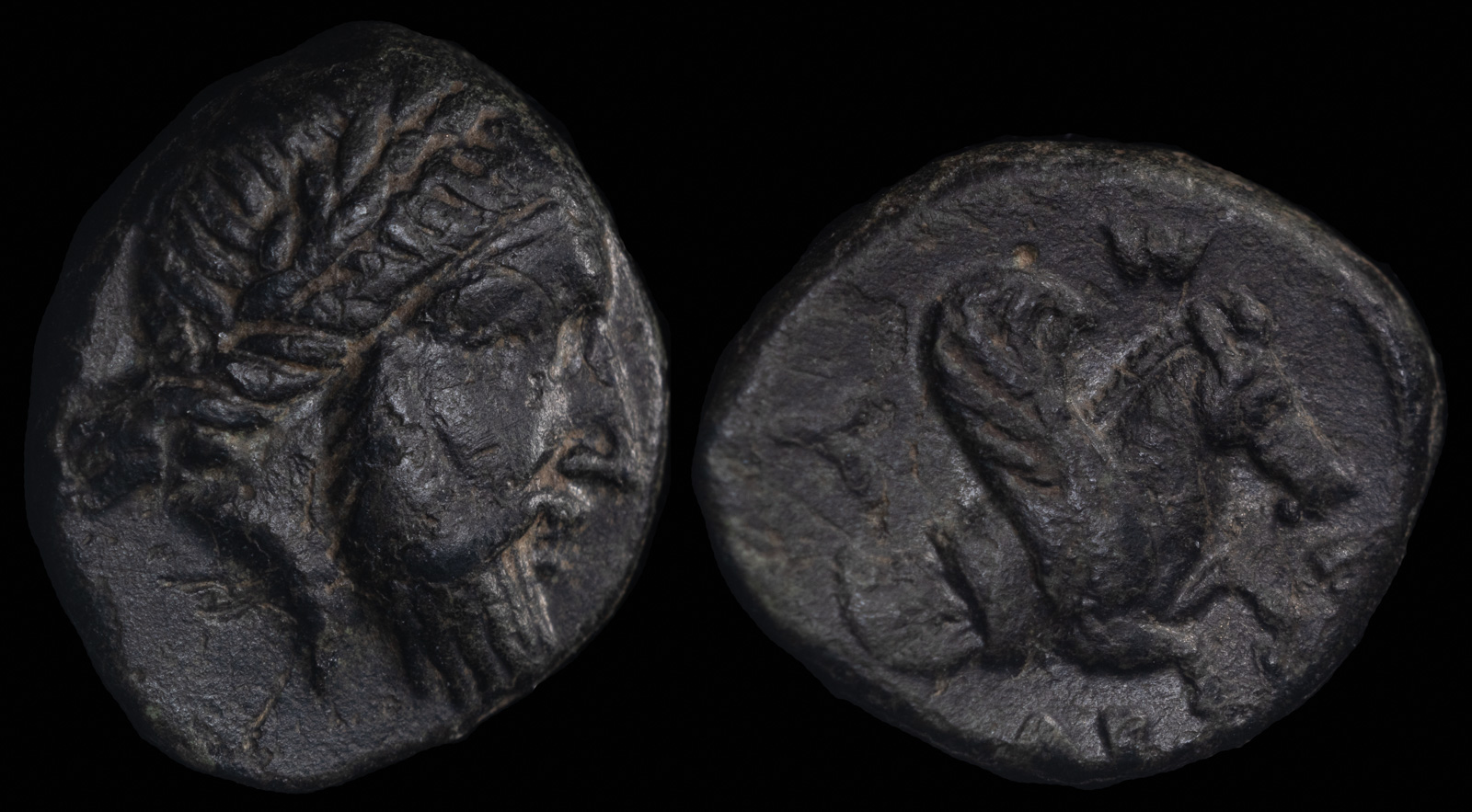
ca. 350 BCE
AE 11mm 2,04g
Laureate, three-quarter facing head of Zeus, slightly right /
ΑΔΡΑ; eagle standing left on pediment.
Von Fritze 4, pl. i, 6
Adramyteion has a long and turbulent history. Supposedly its name came from the son of King Kroisos of Lydia, who administered the city at one point. When Lydia was conquered by the Persians, Adramyteion went along with it. The city was visited by Xenophon’s 10,000 during their travels down the coast.
For most of the period from its founding until it’s occupation by Alexander the Great, Adramyteion bounced between Mytilene and the Persian Empire. After Alexander’s invasion, it was seized by Antigonos Monophthalmos in 319 BCE, then fell again to Lysimachos in 302 BCE.
That’s when this coin was minted. From the time 290 to roughly 283 BCE, the city was renamed Agathokleia in honor of Lysimachos’ son. When Agathokles was executed after Lysimachos suspected a plot against him (though most believe that was a ploy by his then-wife Arsinoe II and Ptolemy Keraunos to install her own son as heir), the city was presumably renamed back.
However, the city didn’t long remain in the possession of Lysimachos, as he was defeated in 281 BCE, largely due to public unhappiness at the execution of Agathokles, and the city fell into possession of Seleukos Nikator.
I’m honestly unsure of the meaning of the weird double-bodied owl. While normally owls represent Athenian power, Adramyteion was never really in Athens’ dominion, nor was Athens even a major player at this point. Owls were symbols of wisdom back then, so perhaps the goal was to portray that without suggesting a connection with Athens.
This coin is more typical of Adramyteion and was issued earlier.

360 – 340 BCE
Ae 12mm, 1.7gms
Obv: Laureate head of Zeus right
Rev: Forepart of Pegasos right; ADPAMY around
Klein 246